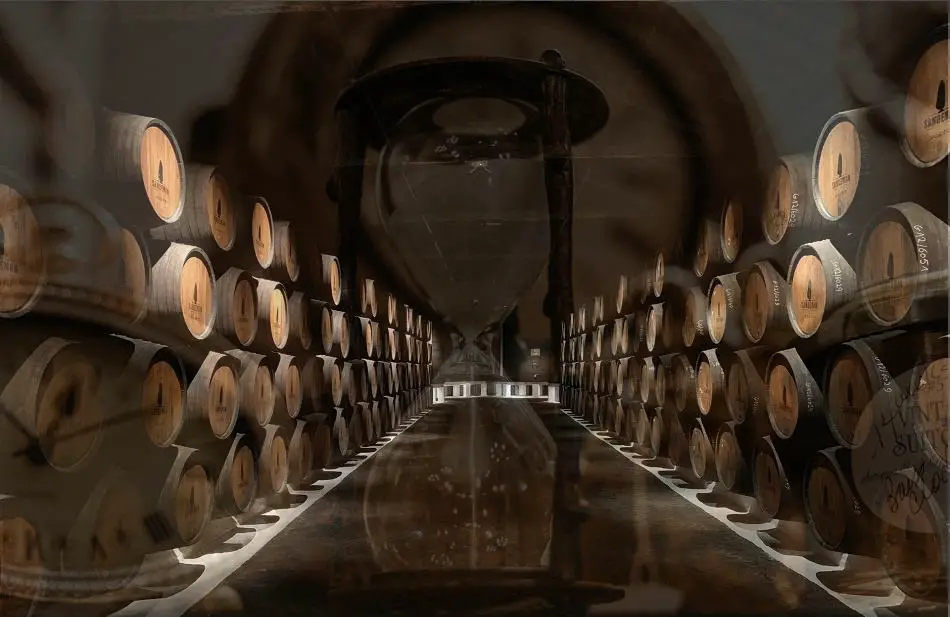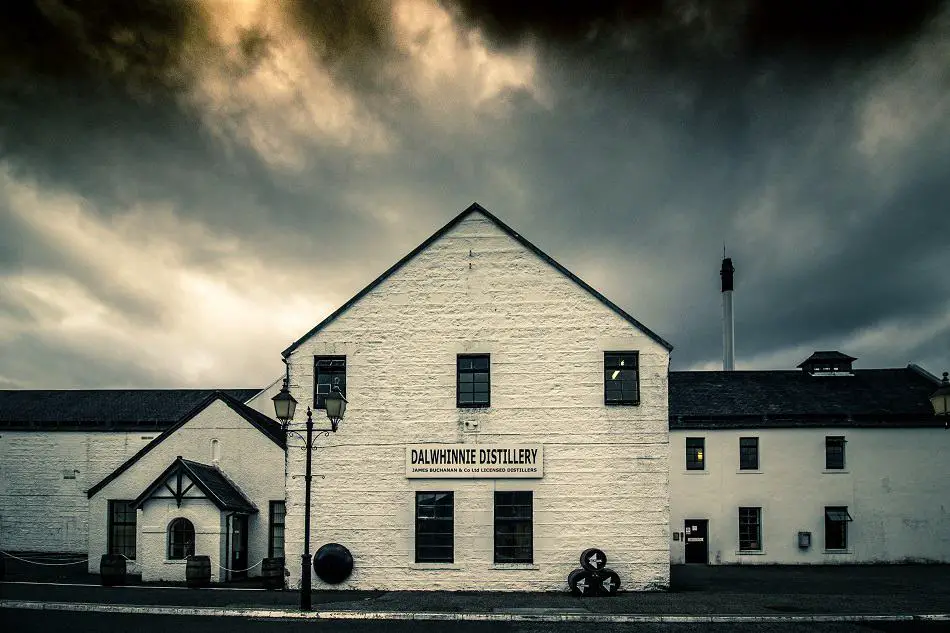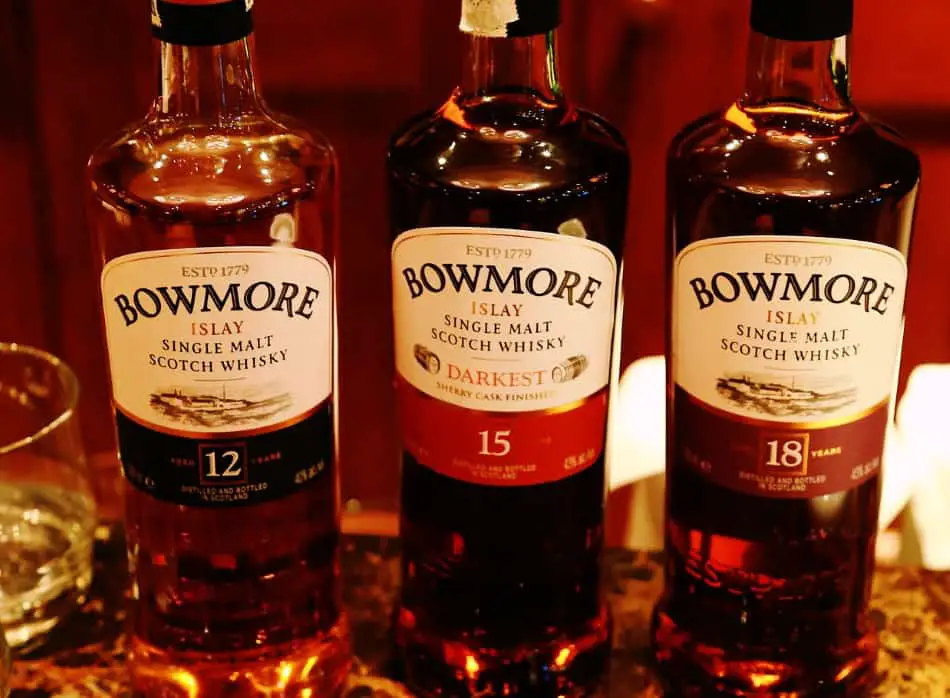One of the most important parts of the whiskey making process is when it’s aged in barrels so that it can pick up lots of flavors. Of course, the longer a whiskey is aged the more flavors it will pick up, which is why many people like to know how old their whiskey is.
Unfortunately, it’s not always easy to know a whiskey’s age. Often there’s no age statement on the bottle and even when there is, it’s not necessarily what it seems. However, despite that, there is a lot we do know about how long whiskey is aged for.
Whiskey can be aged from anywhere between 0 to 50 years. In many countries, whiskey is legally required to be aged for at least three years, but most are aged for much longer because depending on the type, the optimum age of whiskey is between 5 – 30 years. Common whiskey ages are 10, 12, 15, or 18 years old.
In the rest of this article, I’ll also go into more detail about the legal minimum requirements for aging whiskey as well as the common and optimum ages for different types of whiskey. I’ll also explain why it’s not always easy to know how old a given whiskey is even if it has an age statement, and what you can say for certain about how long it was aged for.

How Long Whiskey Must Be Aged Legally
For something to be called whiskey it has to meet several legal requirements (which differ depending on the country in which it’s made) and a minimum aging period is often one of them. The following table shows the minimum aging period of whiskey required by law for the biggest whiskey producing countries:
| Minimum Aging Period | |
|---|---|
| American Whiskey | No legal minimum aging period |
| American Straight Whiskey | More than two years |
| Scotch Whisky | At least three years |
| Irish Whiskey | At least three years |
| Canadian Whisky | At least three years |
As you can see, while there’s no legal minimum aging period for American whiskey (unless it’s termed ‘straight whiskey’, in which case it has a minimum legal aging period of two years), Scotch whisky, Irish whiskey and Canadian whisky have to be aged for at least three years.
The reason why three is the common legal minimum aging period and not two or four or more years is because of the following.
During the entire aging process unpleasant compounds in the whiskey evaporate or are filtered out while at the same time it picks up flavors from the wood. The longer a whiskey is aged, the more this will happen and the better the whiskey will be, but after three years it will have happened enough for the immaturity of the newly distilled whiskey to be very much reduced.
This idea was used more than one hundred years ago, during the First World War, when the UK passed a law that banned the sale of spirits that were less than three years old. Supporters of this law actually wanted to ban alcohol completely but as a ‘compromise’ they decided to ban only spirits that were less than three years old because they believed them to be immature and cause more drunkenness than older spirits.
How long whiskey is usually aged
Whiskey is usually aged for longer than the legally required minimum amount of time. That’s because as mentioned, the more a whiskey is aged the more flavor it will have and the better it will be. Common ages for whiskey are:
- 3 – 5 years old
- 5 – 10 years old
- 12 years old
- 15 years old
- 18 years old
- 21 years old
- 25 years old
- 30 years old
- 40 years old
- 50 years old
Exactly how long a whiskey is aged for will depend on the following factors:
1. The Type Of Whiskey
Different types of whiskey are aged for a different amount of time. The following table compares how long American whiskeys are aged with how long Scotch whiskies are aged.
| Common Ages | |
|---|---|
| American Whiskey | 4 – 10 years old |
| Scotch whisky | 10, 12, 15, 18, 21, 25, 30, 40, 50 years old |
As you can see, Scotch whiskies are aged for (sometimes much) longer than American whiskeys. This is because there’s a big difference between the aging environment of these two countries, and environment affects the rate at which whiskey ages.
Warmer temperatures, more humidity and seasonal fluctuations will accelerate the aging process, whereas cooler temperatures, lower humidity and fewer seasonal fluctuations means a slower aging process.
So American whiskeys aging in Kentucky with seasonal fluctuations that include heat in the summer mature relatively quickly, whereas Scotch whiskies aging in the year-round mild temperate climate of Scotland take far longer to mature.

Within Scotch whiskies, malt whiskies are aged for longer than grain whiskies as you can see from the following table.
| Common Ages | |
|---|---|
| Grain whisky | Most common: 3 – 5 years old Frequent but less common: 8 & 12 years old |
| Malt whisky | 10, 12, 15, 18, 21, 25, 30, 40, 50 years old |
The reason why malt whiskies are aged for longer than grain whiskies is because they mature more slowly. Grain whiskies become drinkable much sooner than malt whiskies, which is why in an industry where time is such an important factor they’re usually not left to age for longer.
2. The Purpose of the Whiskey
Whiskeys used for different purposes are also aged for a different amount of time. The following table compares how long malt whiskies used for blended Scotch whiskies are aged with how long malt whiskies used for single malt Scotch whiskies are aged.
| Common Ages | |
|---|---|
| Malt whisky used for blended Scotch whisky | 5 & 10 years old |
| Malt whisky used for single malt Scotch whisky | 10, 12, 15, 18, 21, 25, 30, 40, 50 years old |
As you can see, malt whiskies used for single malt Scotch whiskies are aged for longer than malt whiskies used for blended Scotch whiskies. The reason for this is because if malt whiskies are going to be mixed with grain whiskies and used in blends, there’s no point in aging them for too long. But if they’re going to be used by themselves as single malts, then you want them to pick up as much flavor as possible.
3. The Optimum Amount Of Time To Age Whiskey
The third factor that helps determine exactly how long a whiskey is aged for, is its optimum age. Because even though the more a whiskey is aged the more flavor it will have, at a certain point additional aging would cause several problems.
The Whiskey Will Become Over Oaked
This is when whiskey takes on too much flavor from the wood and tastes too woody and bitter.
Too Much Whiskey Will Evaporate
Anywhere from 2% – 10% of the whiskey evaporates from the barrel each year. This means that at some stage you’ll have very little whiskey left. Also, since alcohol evaporates at a slower rate than water, the alcohol to water ratio is constantly increasing and at some stage the whiskey will become too alcoholic.
The Whiskey Will Become Too Expensive
There comes a time when the amount a whiskey would improve with further aging would not be enough to make it worthwhile. This is because as time goes on it takes longer and longer to extract the remaining flavors from the wood of the barrel. At some stage the small amount of improvement will not be worth the significant increase in cost necessary to produce it and price necessary to pay to drink it.
That’s why whiskey producers need to determine the optimum amount of time to age their whiskeys. This is done by balancing all the factors we’ve talked about so far and producing a whiskey with the maximum amount of flavor for the type of whiskey it is and what it’s going to be used for, without it becoming too expensive.
And while it will vary for each whiskey in general it’s been found that:
- The optimum age for American whiskey is between 5 – 10 years.
- The optimum age for single malt Scotch is between 15 – 30 years.
4. Marketing
The last factor that helps determine exactly how long a whiskey is aged for, is marketing. We as the consumer seem to respond better to particular ages.
Perhaps an 11-year-old whiskey is so close to a 10-year-old whiskey that it’s not worth the extra cost, but a 12-year-old whiskey is. And perhaps although a 14-year-old whiskey would be cheaper we don’t mind spending a bit more to have a whiskey that’s 15 years old.
And once you’re prepared to break the two-decade threshold, who wouldn’t be prepared to go a step further and pay a bit more for a 21-year-old whiskey. And it sounds older than it is when you say your whiskey is over 20 years old.
How Long Whiskey Is Actually Aged

We know how long whiskey must be aged legally, and we know how long whiskey is usually aged, but the truth is that it’s still not easy to know how long whiskey is actually aged.
That’s because the only people who really know how long a whiskey is aged are the ones who make it, and they don’t have to tell us. Age statements on bottles of whiskey are optional which is why you find that many don’t have one.
And even if a bottle of whiskey does have an age statement you still don’t know how long it was aged for. That’s because an age statement doesn’t tell you the age of the whiskey in the bottle, it tells you the age of the youngest whiskey in the bottle. And it does so because there’s isn’t one whiskey in the bottle. There are many of them.
You see most whiskies are actually a blend of many whiskies. Even single malts, despite what the word ‘single’ might imply, are blended. Not with other whiskeys like real blended whiskeys but with different versions of itself from the same distillery – hence the word ‘single’. Single malts are produced in batches so to ensure a consistent taste they have to be blended with whiskey from different runs, different casks and different years.
So unless you have a bottle of single barrel whiskey (which is not blended in any way because it comes from one barrel) with an age statement, you won’t actually know how long your whiskey was aged for.
However, we can make an educated guess about a whiskey’s approximate age.
For whiskeys with no age statement, we know that they must have been aged for the minimum amount of time required by law. By itself, all that tells us is the whiskey is any age over the legal minimum. But if we add the assumption that if the makers of a particular whiskey could have put a meaningful age statement on the bottle they would have, then it’s safe to conclude that the whiskey is probably not that much older than it has to be by law.
Similarly, for whiskeys with an age statement, although we might not know the age of most of the whiskeys in the blend, it’s safe to assume that the majority will be quite close to the age of the youngest whiskey that we do know. No whiskey makers want their 12-year-old single malts to contain too much of the 21-year-old version of their whiskey.
